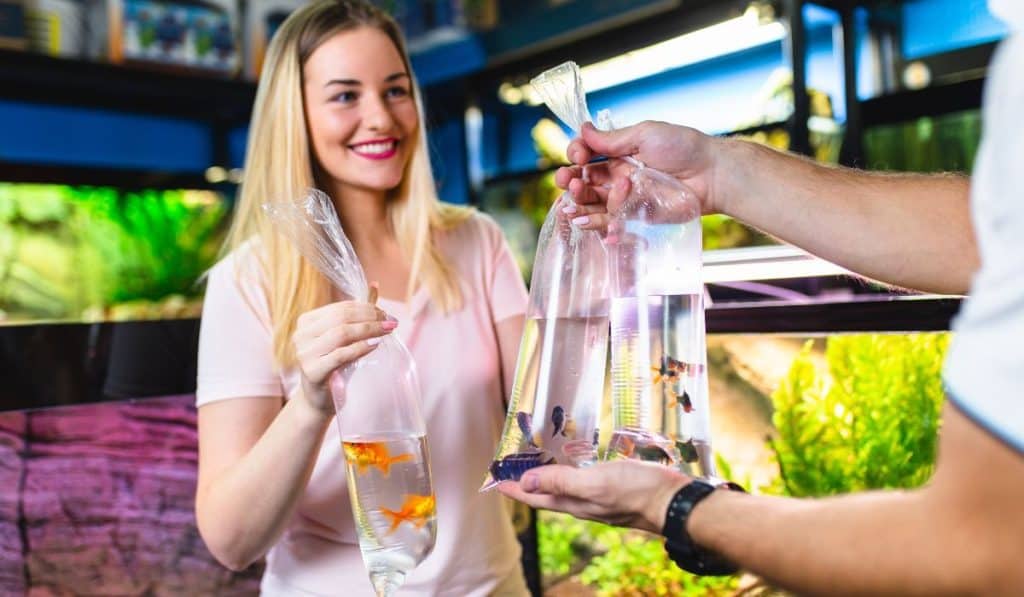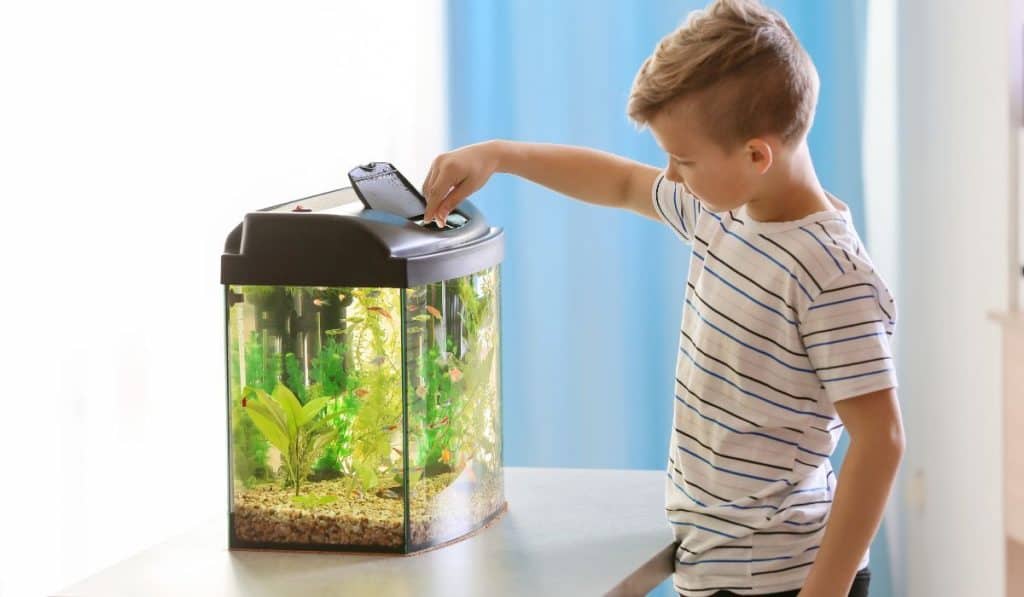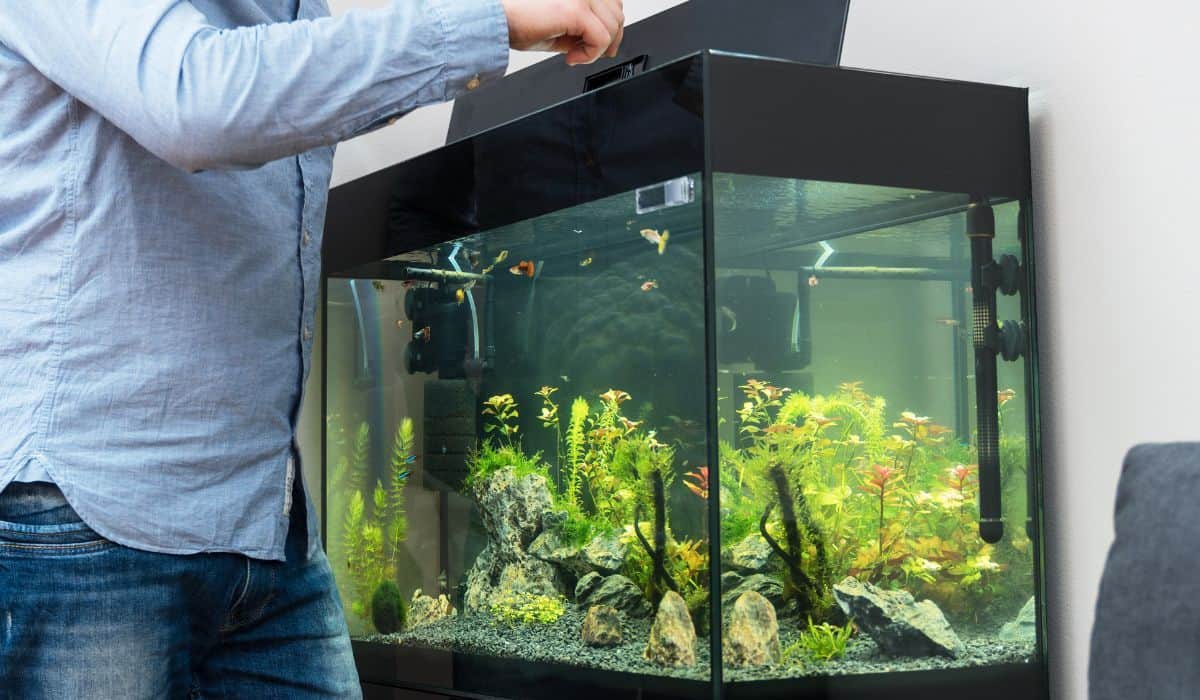You’ve probably thought about taking on fishkeeping as a hobby because you have a crazy schedule, and caring for other pets is more time-consuming.
After all, you’ll have to walk them, clean up after them, pet them, play with them, and visit the vet regularly.
But with fish, it seems like all you have to do is set up the tank with the fish, sprinkle a couple of flakes in the tank once or twice a day, and watch them swim whenever you can.
Taking care of fish will take anything from a few minutes every day to several hours. This is largely influenced by the type and size of fish tank you have. A small freshwater tank will require less time to set up while a large saltwater tank will require more time because of the complexity involved in its set up.
However, is that all it takes to take care of fish? Let’s get into the details about fish keeping hobby.
Research the hobby
Researching will take anywhere between 1–2 months, depending on how many hours per week you’re able to put in.
Fishkeeping is not about merely collecting a couple of goldfish and tossing them in a tank. Research is the most critical part of the fishkeeping process.
To get it right, you must take your time in finding out the answers to important questions such as:
- Where will I place the fish tank, and what size will it be?
- What process is involved in setting up the tank?
- What supplies will I need for the tank?
- What type of fish can you keep? What are their common and scientific names?
- How big do the fish grow, and will they fit in my tank?
- What type of food do these fish eat? Do I prefer herbivore fish or omnivore fish?
- What are their habits, and how often do they need to eat?
- What work goes into maintaining the tank, and am I willing to do it?
Don’t rely on one single source of information. You’ll need to join fishkeeping communities and ask questions.
Also, visit aquarists who have been at it for years and get hands-on experience.
If you underestimate this process, you’ll end up with problems that you could have avoided.
Setting up the Tank
This process is the start of creating a comfortable home for your fish and can take a few hours if you have all the equipment. It involves:
- Cleaning the tank, whether it’s new or used
- Placing it in the right position
- Rinsing the substrate and adding it to the tank
- Adding water and a de-chlorinator to the tank
- Installing equipment like filters, heaters, air pumps, and lights
- Adding plants and decoration
Cycling the new aquarium
Before adding your fish, you must cycle the tank. This crucial process allows good bacteria to grow in the tank that will neutralize the fish’s waste and enable them to thrive.
The cycle can take up to 8 weeks to complete, but sometimes it takes a shorter time.
You’ll know that the process is complete when you test the water using a master test kit.
The ammonia and nitrite levels should reach zero consistently for about a week.
Adding the Fish
The best way to add fish to your tank is in phases, especially if they aren’t the same species.
Depending on the type of fish and size of tank you have, there’s a recommended minimum number you can add at a time.
Find out what it is because you don’t want to overload the tank with waste.

Measure the nitrate level for 3 weeks, and if the water quality remains high, you can add more fish to the tank.
The fish require time to acclimatize to their new surroundings. Float the bag with your new fish in the tank for 15 minutes.
Add a half cup of water from the tank into the bag every 5 minutes until it is full.
Discard half of the water from the bag (pour it outside the tank) and repeat the process.
Take out your fish with a net and introduce it to its new home.
Maintaining the Tank
If you have a huge tank, you won’t have to clean it as often as a small one. However, most tanks should be cleaned once every two weeks.
Smaller tanks of up to 5 gallons will take up to 30 minutes, while bigger tanks can take an hour or so.
Additionally, saltwater tanks will take much longer because they require more materials than freshwater tanks. Maintaining your fish tank generally includes:
- Scraping algae from the inside glass
- Cleaning the stones and decorations
- Vacuuming the debris
- Cleaning the filter
- Cleaning the outside glass
- Changing 25% to 50% of the water when required

Feeding the Fish
It’s advisable to feed your fish only what they can consume in less than 3 minutes so you won’t spend so much time on this activity.
Most fish eat once or twice a day, except for newly hatched fry and small active species, which need three to four feedings per day.
Also, many species can go a couple of days without food, especially if you need to go away for a couple of days.
Watching the Fish
This is the more pleasurable part of fishkeeping. You can watch your fish for as short as a few minutes to as many hours as possible.
It has several health benefits, including reducing stress and anxiety, improving mood, helping Alzheimer’s patients to relax, and calming kids with autism.





